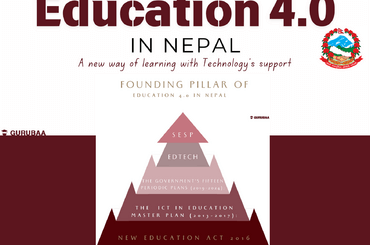Nowadays, students are showing dissatisfaction to education system of Nepal. The syllabus is lacking for fundamental understanding, lack of teachers, incompetent and underqualified teachers, classroom limited education, the text-book focused education which isn’t on par with the actual field, the memorizing concept being irrelevant, and even absence of research and training are the common complains we hear when students are asked about their satisfaction on the current education system.
The current education system doesn’t focus of the understanding and knowledge we gain after completing a degree, but the degree earned is for the sake of earning the certification. Due to this particular reason a student with foreign degree is preferred than a student with a national degree.
Issues with the current system
- Nepal still follows the education system adopted on 1950s from Indian Education system. No matter the changes and improvements brought in the system the core is still the same. It follows three-tier sixteen-year system which basically is the system where one spends 10 years for primary and secondary education, 4 years for college studies and 2 years for the master’s education.
- Learning here is a one-way interaction. The students do not participate actively in the classroom, the environment of the classroom is set as such that the teacher teaches and give all the information they can while students listen and gather the same. Practical and visual knowledge is not available which results to students not understanding the topics.
- The students here only rely on the textbooks provided. There are no other ways a student can gather knowledge; the system is lacking to provide extra resources where they can go beyond the prescribed books. There are students learning about computers without having seen one in real life.
- The teachers are incompetent and not up to date with today’s global world. The teachers use the same methods for teaching used in the past; they explain the chapter, complete the exercises in the books, provide notes and make students practice the old model question papers. This method lacks practical knowledge and skills.
- The classrooms are the only way a student learns. The field studies, practical knowledge and research are not practiced. A student learns through his / her teacher and the only way a student gathers the knowledge he / she has, usually students don’t have access to other means like the internet or research papers, the system doesn’t promote research.
- The condition of public schools is pitiable. It begins with unmanaged classrooms, lacking number of teachers, unavailability of books and study materials and the learning environment of the school itself. In these terms private schools seems sufficient and this might be the reason interest in private schools are at rise in spite of being extremely expensive to afford.
- Most standardized question focus on how much a student can remember than how much a student has understood. This has greatly affected students’ habit of understanding as they focus on memorizing the chapters to pass the test.
- While, the curriculums and programmes seem satisfactory for primary and secondary education, many programmes in the Higher-Level Education seem to be of little relevance to the current domestic and international needs.
- Lack of competitive courses has led to producing dull and tactically weak performers. New courses are not added and the system has failed to attract students which leads students to divert to foreign countries for further studies.
- The funds provided for the improvement in the system is not utilized properly. Most believe in the corruption and internal politics as there is no transparency to where the funds were utilized. The number of students is increasing yet the number of schools, classrooms and teachers remain the same.
It is not that Nepal is incapable of improving the system. The system is being updated with new curriculums and has made several changes compared to what it was before, but it still not satisfactory to the current demands. More improvements in the current curriculums, competitive improvised testing methods, practical and research-based teaching methods, more labs, libraries and technological resources, field studies, number of schools and more competitive qualified teachers are the most prominent areas for improvements. There are numerous schools where teachers aren’t even stationed, the governments really need to stop taking the little steps and start making big changes in the system.

